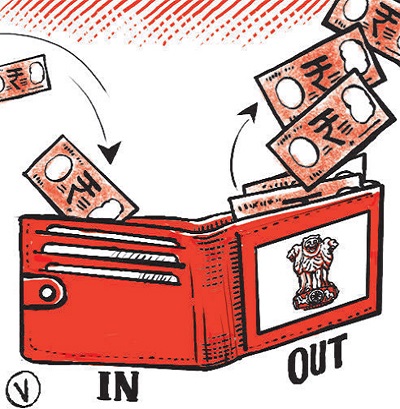I
n common parlance, the term „consumption‟ refers to the act of using up the resources, whereas in economics it means the use of goods and services by households which are not intended to be an investment of some sort i.e. the goods or services are not used with an intention of being sold in future. The expenditure on these purchases is termed as „Consumption expenditure‟. Unless otherwise described, in the context of economic studies the terms consumption, final consumption and consumption expenditure are used interchangeably and carry the same meaning of amount spent on purchase of final goods and services. In the world of economics and finance the Gross Domestic Product (GDP) and GDP growth rate are globally considered as the benchmarks to measure the economic performance of a nation. GDP which is sum total of the goods and services produced within the country‟s geographical borders over a year, can be measured by adding up four broad components viz. (i) consumption, (ii) government expenditure, (iii) investment and (iv) net exports. Among these four, consumption is the most significant component in all economies and thus consumption is one of the bigger concepts in economics. As a dominant part of the GDP the change in consumption carries weight in determining the growth and success of the economy. In the words of Muellbauer and Lattimore 1994, p.292 as cited in [1],“Consumer expenditure accounts for between 50% and 70% of spending in most economies. Not surprisingly, the consumption function has been the most studied of the aggregate expenditure relationships and has been a key element of all the macroeconomic model building efforts since the seminal work of Klein and Goldberg (1955).” While from a macro-economic perspective study of consumption is important as it governs total saving, economy‟s long-term productive capacity, national output. Additionally, it‟s equally important for micro-economics to focus on consumption behaviour in order to measure distribution of wealth, to examine households‟ preparedness for retirement, or to test theories of competition in retail industries. In this paper we shall attempt to examine the trends in private final consumption expenditure in India over the last three decades.
To Cite the article (APA Style):
Gupta, S., & Singh, K. (2016). An Analysis of Changing Rural-Urban Consumption Pattern in India. IOSR Journal Of Humanities And Social Science (IOSR-JHSS), 21(9), 56-71. doi: 10.9790/0837-2109085671







